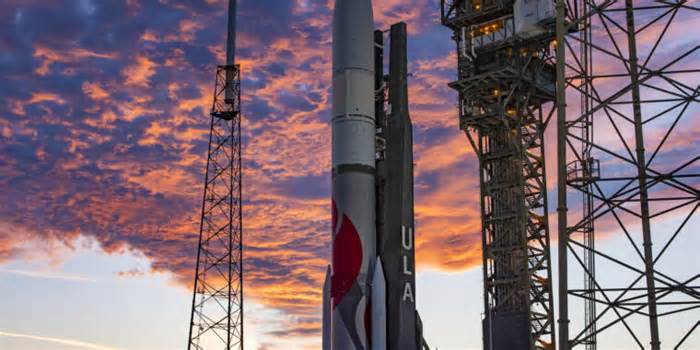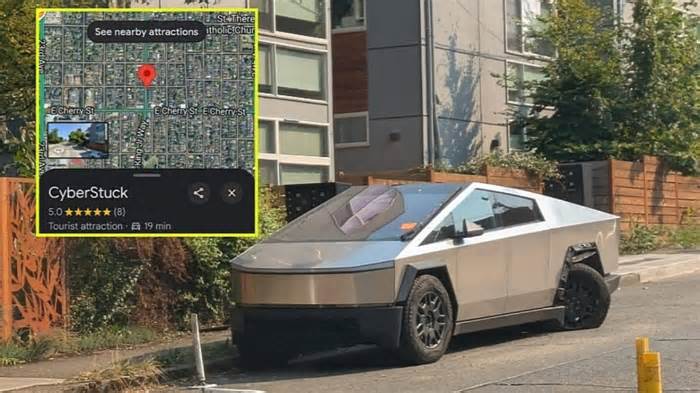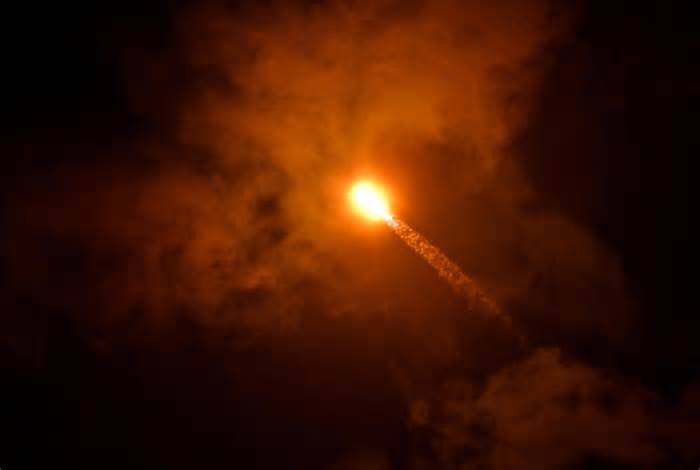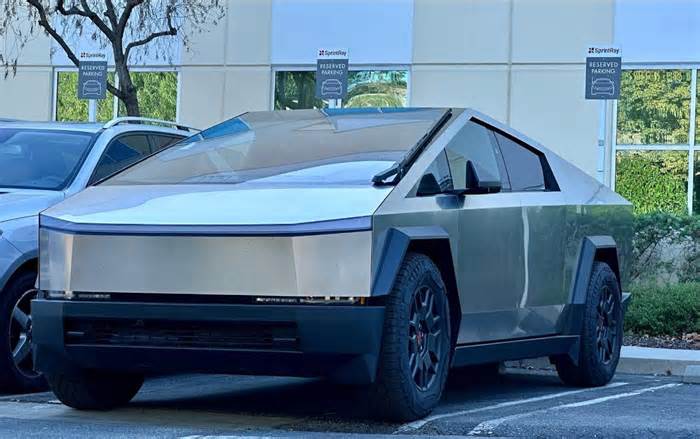
ULA will launch its second Vulcan rocket without a real payload
- by Ars Technica
- Jun 27, 2024
- 0 Comments
- 0 Likes Flag 0 Of 5

25
The second flight of United Launch Alliance's Vulcan rocket will take off in September with a dummy payload in place of Sierra Space's Dream Chaser spaceplane, preserving a chance for ULA to begin launching US military satellites on the new rocket by the end of the year, officials announced Wednesday.
Tory Bruno, ULA's CEO, announced the change in flight plan for the second Vulcan rocket in a conference call with reporters. There was little hope Sierra Space's Dream Chaser would be ready to make its first resupply run to the International Space Station before the end of the summer.
Dream Chaser had been booked to launch on the second test flight of ULA's Vulcan rocket for the last five years. With the near-flawless inaugural flight of Vulcan in January and a successful second flight later this year, ULA's Vulcan will be certified by the US Space Force to loft the military's most sensitive national security satellites into orbit.
The Space Force is eager for Vulcan to become available for a backlog of 25 military launches it awarded to ULA beginning in 2020, when the first Vulcan flight was scheduled to happen in 2021. Instead, Vulcan didn't fly until this year, and there is urgency for ULA to complete the second Vulcan certification flight, known as Cert-2, as soon as possible.
There's still a lot of work for Sierra Space to do to prepare the Dream Chaser spaceplane for launch. Sierra Space's chief executive, Tom Vice, recently told ULA that the Dream Chaser spaceplane will not be ready to fly by September, when ULA will have the nexts Vulcan rocket ready to go.
“Timing is everything," Bruno said. "We waited as long as possible on Dream Chaser because we really, really wanted to fly them. It’s a very exciting mission.”
"Certification at our own expense"
ULA's other big customer, Amazon's Project Kuiper broadband constellation, also won't be ready to launch its first batch of operational satellites on a Vulcan rocket this fall. Bruno said no other payloads could be ready to launch by September, so ULA will put a dummy satellite on the second Vulcan rocket.
This dummy payload, or mass simulator, will mimic the weight of a a functional spacecraft, but won't deploy from the Vulcan rocket's Centaur upper stage. ULA built the mass simulator as a backup to launch on the first Vulcan test flight earlier this year if its main payload, Astrobotic's Peregrine lunar lander, missed its ride. Now, it will take the place of Dream Chaser on the Cert-2 mission.
Ars first reported in April that ULA, a 50-50 joint venture between Boeing and Lockheed Martin, was considering flying the Cert-2 mission with a dummy payload due to delays with the Dream Chaser spaceplane.
On Cert-2, the Vulcan rocket will fly in the same configuration as it did on the debut launch in January, with two strap-on solid rocket boosters to provide additional thrust alongside two methane-fueled BE-4 main engines made by Blue Origin, Jeff Bezos's space company. Vulcan's upper stage, called the Centaur V, will accelerate into low-Earth orbit a few hundred miles above Earth, then perform several experiments and maneuvers to demonstrate the upper stage's capabilities for future operational missions.
"We'll do some maneuvers with the upper stage just to fully characterize the limits of what Centaur V can do," Bruno said. Future Vulcan missions will require the Centaur V upper stage to fly in space for six or more hours to place national security payloads directly into geosynchronous orbit more than 22,000 miles (nearly 36,000 kilometers) over the equator. Enlarge
/ The first stage booster for ULA's second Vulcan rocket arrived at Cape Canaveral, Florida, this week for final launch preparations.
Optimistically, the first two national security space missions could launch on Vulcan by the end of the year. The first of these is codenamed USSF-106, with an experimental Air Force satellite to test new navigation technologies and a six-pack of NASA mini-satellites to study the physics of explosions in the Sun's atmosphere. Another Space Force mission, USSF-87, is next in line after USSF-106 on the Vulcan launch schedule.
The first flight of Sierra Space's Dream Chaser spaceplane remains in the mix for a slot on ULA's Vulcan launch manifest. A spokesperson from Sierra Space said the company is making "excellent progress" on Dream Chaser, and that the spaceplane is on track to fly by the end of 2024.
"As a defense-tech prime, we understand how important ULA's Cert-2 mission is to the criticality of national security and our launch partner's schedule," Sierra Space said in a statement. "We are working closely with ULA to identify the next available launch date."
All told, Bruno said ULA plans eight launches this year, with three already complete and five to go.
Who's waiting on whom?
ULA has sold roughly 70 Vulcan rockets to date for missions with the Space Force, Amazon, and Sierra Space. To meet this demand, ULA plans to rapidly ramp up the Vulcan launch cadence, with the goal of two flights per month in 2026. But ULA's main customer has questioned the company's ability to execute on this plan.
"I am growing concerned with ULA’s ability to scale manufacturing of its Vulcan rocket and scale its launch cadence to meet our needs," wrote Frank Calvelli, the Air Force's assistant secretary for space acquisition, in a May 10 letter to Boeing and Lockheed Martin, ULA's co-owners. "Currently there is military satellite capability sitting on the ground due to Vulcan delays."
Bruno said ULA has set up an independent review team, at Calvelli's request, to look at the company's ability to build and launch Vulcan rockets as often as it says it can.
There are 34 rockets in production at ULA's factory in Decatur, Alabama, Bruno said, most of them Vulcans. The final batch of Atlas V rockets will be completed by the end of this year and put into storage. ULA has 16 more Atlas Vs to fly: One each for the Space Force and the commercial satellite broadband company Viasat, six crew missions with Boeing's Starliner capsule, and eight for Amazon's Kuiper internet network.
Advertisement
Most of the Atlas Vs left in ULA's inventory will fly in 2025, according to Bruno. with the final few Atlas Vs launching Starliner crew missions about once per year through the rest of the 2020s. After the eight launches on ULA's schedule this year, the company aims to fly 20 times in 2025, then as many as 25 times in 2026.
In response to Calvelli's concerns, Bruno told reporters Wednesday that he believes ULA has turned a corner in production of Vulcan rockets in Alabama. Blue Origin has delivered all of the BE-4 engines ULA needs for its Vulcan launches this year, will begin delivering BE-4 engines for the 2025 launch manifest soon. He said ULA is on track to deliver the third Vulcan rocket to Cape Canaveral in August for the first military launch this fall.
"I have a great deal more confidence in Blue’s ability to meet our needs, that we would have been concerned about many months ago, or a year ago," Bruno said.
Ultimately, Bruno said anticipates it's more likely that ULA will have rockets waiting on payloads, rather than payloads waiting on rockets. "We'll be waiting on satellites, not the other way around," he said.
Please first to comment
Related Post
Stay Connected
Tweets by elonmuskTo get the latest tweets please make sure you are logged in on X on this browser.
Sponsored
Popular Post
Middle-Aged Dentist Bought a Tesla Cybertruck, Now He Gets All the Attention He Wanted
32 ViewsNov 23 ,2024
Tesla: Buy This Dip, Energy Growth And Margin Recovery Are Vastly Underappreciated
28 ViewsJul 29 ,2024






 Energy
Energy



















